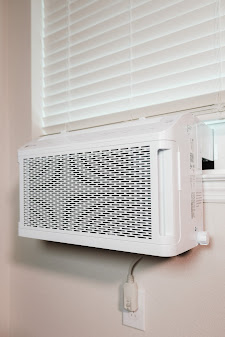Demystifying the Inner Workings of an AC Compressor
Air conditioning systems are a ubiquitous and essential part of our daily lives, providing comfort and relief during scorching summer days. Central to the functionality of these systems is the AC compressor, a vital component responsible for cooling and circulating refrigerant within the unit. In this article, we will delve into the intricacies of how an AC compressor works and the essential processes that make it function effectively.

Understanding the Working Principle of an AC Compressor:
The AC compressor operates on a fundamental principle of thermodynamics and fluid dynamics, where it plays a central role in the heat exchange process. Its primary function is to compress and circulate refrigerant, a heat-absorbing substance, throughout the air conditioning system. The compressor's operation can be broken down into a series of key steps:
Compression of Refrigerant:
The compressor begins by drawing in low-pressure, gaseous refrigerant from the evaporator coil. It then compresses this refrigerant, significantly increasing its pressure and temperature. This compression process is crucial in preparing the refrigerant for the next stage of the cooling cycle.
Conversion to High-Pressure Gas:
As the refrigerant is compressed, it transforms into a high-pressure, high-temperature gas. This conversion enables the refrigerant to absorb heat more efficiently from the indoor air, contributing to the cooling effect of the air conditioning system.
Release of Heat:
The pressurized, high-temperature gas is then directed to the condenser coil located outside the building. In this coil, the refrigerant releases the heat it has absorbed from the indoor air into the surrounding environment, causing the refrigerant to change from a gas to a high-pressure liquid state.
Expansion and Cooling:
The high-pressure liquid refrigerant is then passed through an expansion valve or capillary tube. This sudden expansion causes the refrigerant to drop in pressure and temperature rapidly. As a result, it turns into a low-pressure gas, which is sent back to the evaporator coil inside the building.
Absorption of Indoor Heat:
Inside the evaporator coil, the low-pressure gas absorbs heat from the indoor air, causing it to vaporize and return to a gaseous state. This process repeats continuously, maintaining a comfortable indoor temperature.
In essence, the AC compressor serves as the heart of the air conditioning system, continuously pumping and circulating the refrigerant to facilitate the heat exchange required for cooling indoor spaces.
Maintaining Optimal AC Compressor Functionality:
To ensure the efficient operation of an AC compressor, regular maintenance and care are essential. Keeping the compressor clean, checking for refrigerant leaks, and ensuring proper airflow are some of the ways to maximize its lifespan and performance. Moreover, periodic professional servicing can help identify and address any issues before they become major problems, ensuring that your air conditioner continues to provide reliable cooling.
In conclusion, The AC compressor is a crucial component in the cooling process of an air conditioning system. Understanding its working principle, which involves the compression and circulation of refrigerant, can help us appreciate the engineering marvel that keeps us cool on hot summer days. Regular maintenance and attention to the compressor's health are key to ensuring a long-lasting and efficient air conditioning system.
.jpg)

Comments
Post a Comment